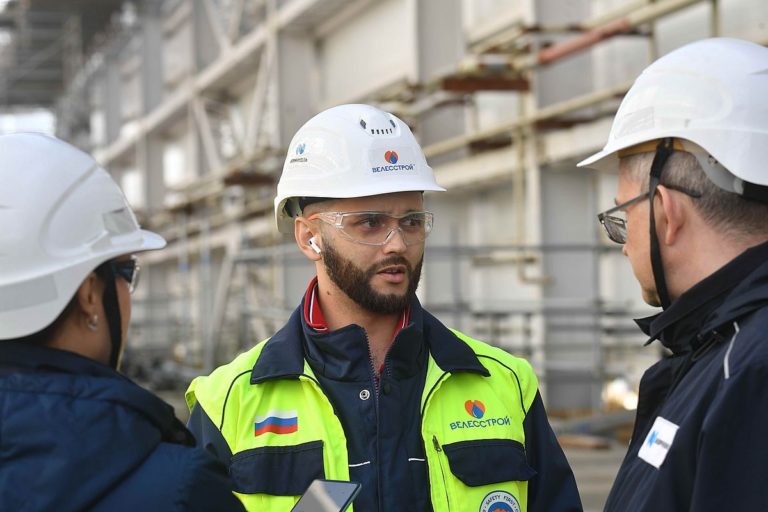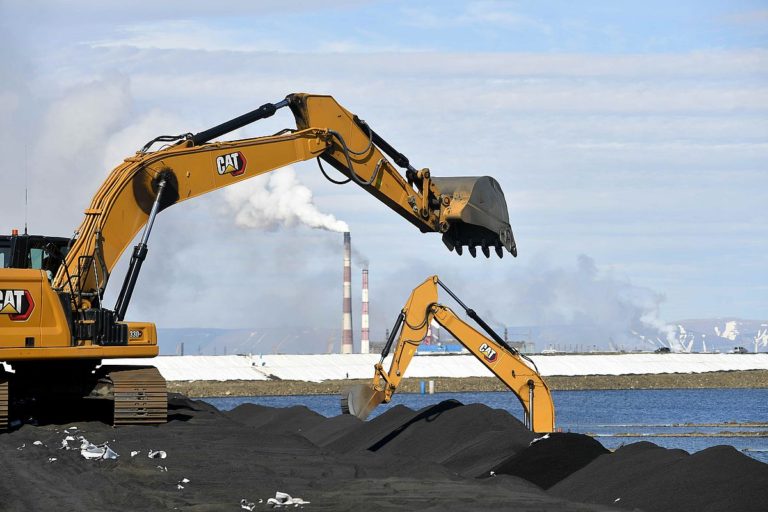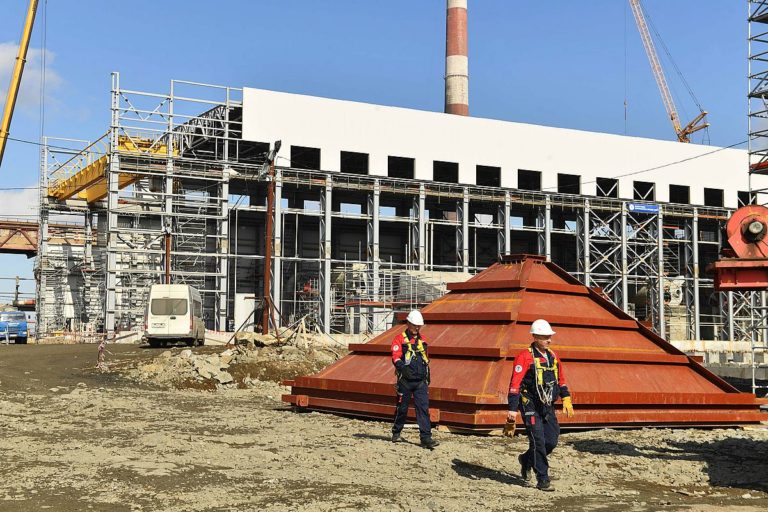#ARCTIC. #SIBERIA. THIS IS TAIMYR. Large-scale work has begun at one of the Nornickel’s Sulfur Program’s strategic objects. A large technological overpass consisting of three circulating water pipelines and five slurry pipelines is being built in two shifts: it will connect the new ecological production with the gypsum storage.
According to the Nornickel’s Polar Division’s press service, the total pipelines’ length will be 41 kilometers. 16.5 kilometers have already been mounted.
The Sulfur Program project office’s senior manager at the NMP Pavel Zhigulin said:
“Environmentally friendly product gypsum obtained during the sulfuric acid neutralization with limestone will be pumped through the slurry pipelines from the Nadezhda Metallurgical Plant’s (NMP) site for storage in a gypsum storage. And the water that has settled from the gypsum will be sent back through the water conduits to the NMP to participate in the next sulfuric acid neutralization cycle. The system will operate on a closed loop”.
“The domestic production pipes from SOMEKS are used for the construction. They are made strictly according to the dimensions and characteristics required for the Sulfur Program. Their advantage is in the welds’ absence which eliminates leakage. And the pipe lining’s polyurethane coating protects the pipes’ inner surface from being abraded by gypsum particles”, explains Pavel Zhigulin.
The gypsum storage is also being built: the primary enclosing dam, 16 meters high, is almost completely filled. It will be increased to 35 meters.
Seven million tons of soil and rubble were used to build the object. Up to 700,000 square meters of hydromats will be laid in the foundation, 450,000 of them have already been lined. This coating performs a waterproofing function and protects the dam from flood waters.
The Sulfur Program’s project office’s chief manager at the NMP Sergey Sergeev said:
“The natural waterproofing role will be played by the gypsum itself, which will close the pores in the ground with small particles. The complex provides for three floating pumping stations, a pipeline emptying unit and a switching unit for water intake both from the gypsum storage and from the Plant”.
The rest of the environmental project’s work are also on schedule and impress with their volumes. More than three thousand people and 700 pieces of equipment are involved in the construction. Over 30 main and auxiliary facilities are being erected.
Almost 90 percent of all concrete work are completed: 105,000 out of 122,000 square meters are made. The half of all metal structures are assembled: more than 18,000 out of 37,000 tons. The construction of pipelines is completed by 23 percent: 38.5 kilometers out of 169 are laid. The equipment’s installation exceeded 42 percent of readiness: more than five tons of technological capacities are installed out of 12 tons.
The largest amount of work on the equipment’s installation continues at the sulfuric acid production site. Testing a mixing tower, where the incoming gases will be equalized and dried, is planned in July.
The equipment’s tightness will be checked under pressure. The sulfuric acid storage tanks located in the neighboring area are already undergoing a leak test. Then the electrostatic precipitators’ turn will come, they are also in the final stage.
The Sulfur Program’s largest equipment’s installation has been completed: 15 heat exchange units with a total weight of almost three thousand tons have taken their place in the contact-compressor department. The installation was completed ahead of schedule: two and a half months instead of three.
The installation of equipment for the drying-absorption department is also underway, where the process of gas absorption by liquid will take place after oxidation and sulfuric acid will be obtained. Now two absorbers, a drying tower and four compressor units (three of which are ready) are being installed on the site.
15 out of 24 reactors in the future sulfuric acid neutralization workshop are already in operation. Two of four ball mills in the limestone crushing area have been completed. The overpasses for water supply, heating, automation networks and pumping sulfuric acid are being erected along the future production’s workshops. The external pipe laying will allow serving the production safely and conveniently.
The main equipment is also being installed at the limestone receiving area, where raw materials will be supplied to neutralize sulfuric acid. Bunkers are being installed here: limestone will be transported by conveyors from them to a neighboring site for grinding.
“19 out of 32 bunkers and the first conveyor line have already been installed. At the same time, heating work are underway, roofing work and the site’s thermal circuit installation will begin soon”, said the Velesstroymontazh’s deputy head Evgeny Oshchepkov.
The Norilsknickelremont (NNR) and the Mechanical Plant have started manufacturing the key project’s equipment: titanium gas ducts, through which exhaust gases from pyrometallurgical furnaces will be supplied for purification. The first batch is expected by the end of July.
Sulfur dioxide emissions in Norilsk are planned to be reduced by at least 45 percent compared to 2015 during the Sulfur Program’s implementation after 2023 and by almost 90 percent (ten times) in the future. The project’s cost is estimated at more than 300 billion rubles.
Earlier we told that the Nornickel Corporate University has started training specialists for work at the Sulfur Program’s objects.
Follow us on Telegram, VKontakte.
Text: Ekaterina Elkanova, Oksana Serova, Photo: Marina Peshkova, Sergey Sergeev






















